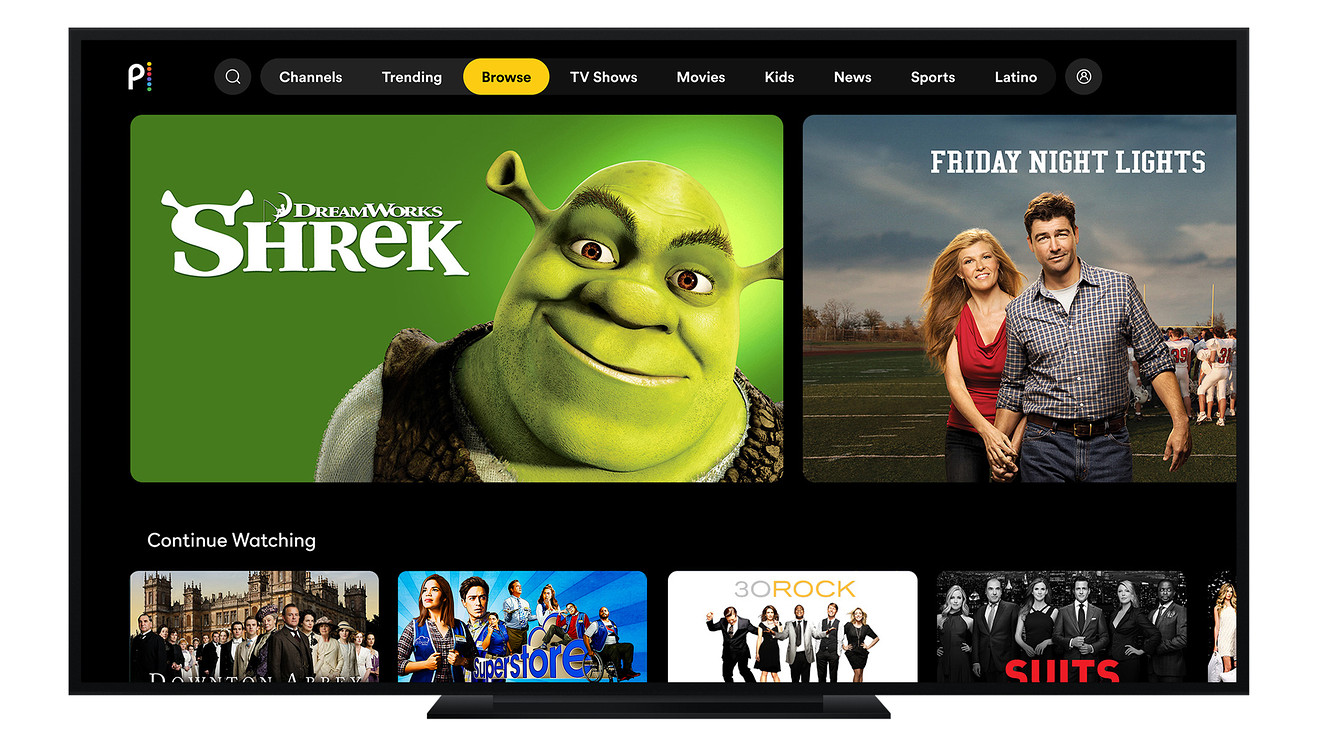
Peacock is strutting into the crowded field of streaming services.
The video subscription service launches Wednesday July 15 with tiered pricing that ranges from a free, ad-supported option to a $9.99 premium choice without commercials.
Maybe the service is another feather in the cap for NBCUniversal and its parent company, Comcast CMCSA, +0.09%, but it’s yet another choice for inundated consumers.
Peacock will present hit television shows such as “Parks and Recreation,” episodes from the “Saturday Night Live” vault, movies including “Jurassic Park” and live sporting events. The coronavirus outbreak waylaid plans to stream the 2020 Toyko Olympics, which have been postponed until next year. But Peacock announced last week it will be offering more than 175 soccer matches in the 2020-2021 season for England’s Premier League.
It might sound like a good deal, but is Peacock flying to the front of the pack? In addition to Peacock, viewers also have AT&T’s T, -0.46% HBO Max, Netflix NFLX, -6.52%, Amazon AMZN, -1.26%, Disney DIS, -0.65%, Apple AAPL, -0.20% and Hulu.
Experts have previously found that most families are willing to pay at most $50 a month for streaming services, typically paying for a maximum of three services.
But B.J. Pichman, research manager at market research firm Comperemedia, said the pandemic has raised a number of questions about consumer streaming habits. One thing’s for sure: the outbreak created more streaming subscribers across the industry, he said.
But with stay-at-home orders relaxing and summer in full swing, Pichman wonders how many new streaming customers will stay on. Another question is whether customers in an uncertain economy will want to pay for an array of services, he noted. “The pandemic will bring more people to streaming,” Pichman said. Some of those people will drop off, but many will stay, he said.
“Clearly, consumers are going to hit a subscription burnout point,” said James Willcox, senior electronics editors at Consumer Reports. But the pandemic could affect viewing habits two different ways, he said. Some cash-strapped subscribers might end services to save money. But others might be willing to spend a little more on other offerings because they’re not spending money going out to restaurants, concerts or movies.
So the same question remains: what to watch and what’s the best bang for the buck? Here’s a look at the pros and cons.
Peacock
The pros: The new service from NBCUniversal comes in three versions. There’s a free version with ads that will offer next-day access to certain current series, news and access to original content and a back catalogue that includes “Law and Order” and the “SNL Vault.” In 2021, “The Office” will come to Peacock from Netflix. The free version of Peacock alone has 13,000 hours of content and the premium versions will have over 20,000 hours, according to NBCUniversal. The Peacock Premium version, for $4.99, will add on extra content and the $9.99 comes ad-free. Peacock Premium has the 175 Premier League matches, though the free option will include the U.S. Open tennis tournament.
Pichman said the service could be a nice beginner step for people who haven’t seen what streaming can offer. “It’s like streaming content for TV people,” he said.
The cons: Part of the Peacock service is the capacity to stream live sports. This summer, that was supposed to included the 2020 summer Olympics in Tokyo. But organizers pushed the games back to 2021 due to the coronavirus pandemic. “This was going to be their big tent pole. This hurts them a lot,” Pichman said. In his view, the $9.99 price tag for the premium version could be a little steep for the ad-free content that’s offered.
Peacock also will not be available on Roku and Amazon Fire TV at the time of launch, according to the Wall Street Journal. HBO Max subscribers also currently can’t watch on those platforms.
HBO Max
The pros: First of all, there’s HBO Max, HBO Now and HBO Go. What’s the difference between them? HBO Max is a stand-alone streaming platform for customers, which, Pichman explained, will replace HBO Now. “If you’re a cord cutter and paying for HBO Now, now you’re paying for HBO Max,” he said. HBO Go is the streaming platform for customers who already have the channel.
For Pichman, HBO Max’s big allure is the content. Think of HBO Max as a “grown up Disney Plus,” he said. That’s because it will come right out of the gate with a range of time-tested shows, albeit some that skew darker than much of what’s on Disney. There’s the unapologetically foul-mouthed “South Park” and streaming of DC superhero movies like the “Batman” franchise. The bleak, record-breaking “Joker” will also be there. HBO Max also landed all of the “Harry Potter” movies as well.
The outlet has “huge well-known shows, arguably some of the best,” including TV icons like “The Sopranos,” and more recent hits like “Big Little Lies” and “Succession.” It will also have classic shows like “The Fresh Prince of Bel Air.”
The cons: The price tag. HBO Max costs $14.99 a month. “When you look at the price across the competitive landscape, it’s most expensive one,” Pichman said.
Also, if an HBO Max subscriber wants to stream the service on their television via Roku or Amazon Fire, they’ll be out of luck for now, noted Willcox.
Disney+
The pros: The Disney+ offering has everything from “Star Wars” to “Bambi.” “It’s really great for families with children,” Pichman said. The service has 7,500 episodes from various Disney shows and 500 movies — and that’s just the start, Pichman said. “They’ve got a lot of runway with those series to do a lot of spin-offs,” Pichman noted.
Earlier this month, Disney released the film version of the blockbuster Broadway musical “Hamilton.”
See also:Before you sign up for Disney+, this calculator adds up the ‘true’ cost of your streaming services
The cons: Disney has a lot of offer, that’s for sure. But it’s still just one service, Pichman noted. “They don’t have everything. It’s one house.”
Apple TV+
The pros: “The upside is going to be completely fresh and exclusive content,” Pichman said. Not only that, it will probably look pretty slick too, he said — “typical Apple high production values.” Big names like director Steven Spielberg and actors Steve Carell and Jennifer Aniston signed on for projects, he noted. (Though come critics were pretty rough on Carrell and Aniston’s “Morning Show.”)
The video service went live Nov. 1, while a gaming service for another $4.99 a month started Sept. 19. Its monthly cost is $4.99.
The cons: There’s not really much of a back catalog of shows and movies to pick from — not yet at least. All streaming services showcasing original content will be facing challenges in the coming months because the pandemic has put a halt on productions, Pichman noted. And that could especially crimp a platform like Apple, he added.
Hulu
The pros: “Hulu’s got a lot of content. They’ve got a pretty great back catalog of old television programs,” he said. That includes past hit shows like “Bob’s Burgers,” “Family Guy” and “30 Rock.” And it’s pretty quick to post current prime-time programming. “For the cord cutter, they are not really missing out on any broadcast TV,” he said.
The cons: “Original programing is pretty sparse right now,” noting that original shows like “The Handmaid’s Tale” are few and far between, in his view. And then there are the commercials that viewers have to watch on the basic plan, which could actually be a pro or a con. “If you don’t mind the commercials, it’s a very competitive price,” Pichman said.
Netflix
The pros: Choice, choice, choices. There’s the catalog of Hollywood movies and televisions shows — to be filled with “Seinfeld” episodes starting next year — and all the original programming like “Stranger Things,” “Black Mirror” and “Orange is the New Black.” “Netflix still has a lot of content,” and it’s pouring money into creating even more, Pichman said.
See also: It’s not your imagination — Netflix doesn’t have as many movies as it used to
The cons: “Netflix is starting to look expensive in comparison,” Pichman said. While the Netflix basic plan is $8.99, the premium one is $15.99 a month. And some of the new programming coming out now leaves Pichman a little underwhelmed. “The content coming out now feels a little rushed,” he said.
Amazon Prime Video
The pros: “The fact you get it for free with Prime membership is fantastic,” said Pichman. And there’s also some good shows on there as well, he noted — that includes shows like “Transparent,” the “Jack Ryan” series, and “The Marvelous Mrs. Maisel.”
The cons: “It feels like a benefit for Amazon Prime people that most people don’t know they have,” he said. There are certainly some hits on the programming, but there are misses too. “It feels random,” Pichman said of the array of shows and movies. And while $119-a-year Amazon Prime memberships have their perks, they aren’t for everyone.
Comcast shares are down almost 8.5% this year compared to a 6.6% loss for the Dow Jones Industrial Average DJIA, -0.23% and a 1% decrease for the S&P 500 Index SPX, +0.28%.
This story was updated on July 14, 2020.








